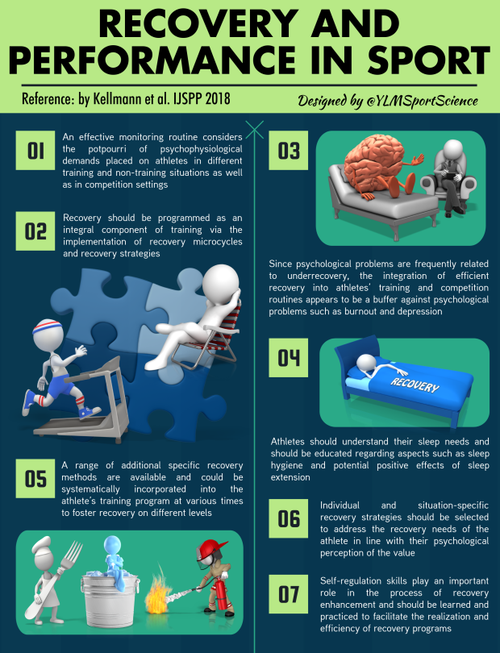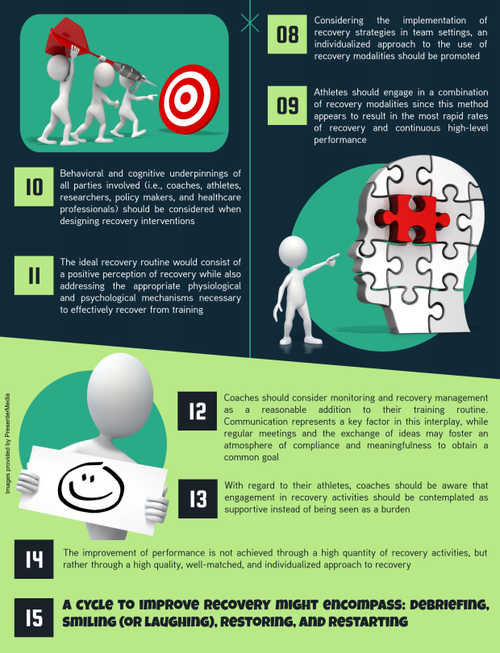RECOVERY FOR MARATHONERS; HOW TO APPROACH IT AND WHAT TO USE?
1) Nutrition and hydration intake:
See the February blog for specific details, but ensure adequate and appropriate macronutrients of carbohydrate, fat and protein following each training session or competition. Take the time to plan out your pre- and post-session nutritional needs to prevent inappropriate or low-quality intake. Further, minimise the volume of alcohol in the days post-race.
2) Training load/exposure:
Adapt training load after the race or after big training sessions. Whilst back to back sessions may be of use during deep training blocks, the more load present post-race or a heavy session will blunt the recovery process. Adjust your training loads accordingly.
3) Sleep
Sleep is the period for most physiological and cognitive restoration, so aim for the 7-9h/night (with ≈80% efficiency), though in reality aim to wake feeling refreshed. Don’t stress about sleep, but make conducive environments and use sleep hygiene techniques, i.e. low-light, minimal electronic activity before bed, earlier bedtime routines, eye masks and mental relaxation techniques to aid sleep onset.
In regards, to “small helper” interventions for recovery, these may include recovery aids such as 1) cold or contrast-water immersion or cryotherapy techniques, 2) compression garments, 3) active recovery, 4) massage/rollers/stretching, and 5) mindfulness/meditation/wellness.4,9,11,12
More specifically;
1) Water immersion and cryotherapy methods have some role as pain relief to reduce muscle soreness (analgesic effect), though only result in marginal effects to improve performance or physiological recovery. Use to reduce pain sensations and reduce thermoregulatory load.
2) Compression Garments again have some claims to improve performance and recovery, but the effects are generally perceptual in nature with most evidence showing limited performance or physiological recovery. Use them to feel better and improve perception of recovery.
3) Active recovery is an age-old adage, and whilst continuity of training load may assist in preventing some detraining, it is important to do this in the absence of any specific pain indicative of injury risk. Use as a light training stimulus, but don’t train just for the sake of it when trying to recover.
4) Massage, rollers and stretching are all popular, though have limited evidence that these techniques speed physical, neuromuscular or physiological recovery. Regardless, these methods are a staple of most athlete’s prehab and rehab routines. All methods create short term analgesic effects and improve perceptual recovery, thus can be important for belief in training preparedness.
5) Mindfulness, meditation and wellness are often overlooked given the volume and time required to train for marathons. Whilst not a recovery technique per se, such methods can be of use to assist sleep onset, create time away from training stress or control anxiety around training and life issues.


Recovery Interventions: what and when to use?
In summary, the need for recovery will be proportional to the load you’ve encountered and your familiarity with that exercise load i.e. the distance or speed or hills in a session. Hence, competitions likely take the longest duration for recovery, followed by the hardest/largest training sessions and in turn smaller or easier training sessions. The time you allow for recovery and the type and volume of recovery interventions you use should be adjusted accordingly.9,11
Recovery from Competition: Following competition consider nutritional intake and hydration over the ensuing 24-48h as your most important recovery method, followed by increasing sleep volume and quality. In turn, over the ensuing 2-4 days post-competition active recovery with light loads (preferably non-weight bearing) are appropriate only in absence of injury or pain (otherwise rest is more important). During the 2-5 days post, add on smaller recovery interventions of foam rolling, ice-baths and enjoyable leisure activities as required. Importantly, remember that avoidance of sub-optimal behaviours ie. low nutritional quality (take-away), increased alcohol (boozy nights), late nights (celebrations) or fast increase in training load (next race focus) as these will be more detrimental to recovery than any intervention will be able to assist!
Recovery from Training: For training, use recovery interventions based on the type, load and accumulation of your training. Nutritional intake and hydration status remain of importance on a daily basis to tolerate and recover from all training sessions. Not all sessions require external recovery aids, but consider addition of other interventions when training volumes or intensities are increased, including; ice-baths, contrast-baths, wearing compression garments or self-massage/roller techniques. Whilst the physiological effects of these are often low, they will still assist perceptual recovery and make you feel ready for ensuing training. Nightly mindfulness or wellness sessions can also help runners who are suffering anxiety and stress from life or training. Mental preparedness is still a critical part of your recovery process, so don’t forget looking after you and not just your body! Train hard, but train smart and use recovery as a vehicle to assist the training process and in turn competition performance.
Huge thanks to Rob for sharing his insight and expertise, good luck to everyone maintaining their fitness for races in the hopefully not too distant future!
You can find similar infographics from @YLMsportscience on their app:-
Apple Store : https://tinyurl.com/whw8rqg
Google Play : https://tinyurl.com/yc3qgxsu
References:
- Bernat-Adell MD et al. (2020) Recovery of Inflammation, Cardiac, and Muscle Damage Biomarkers After Running a Marathon. J Strength Cond Res. In press.
- Besson T et al. (2020) Fatigue and Recovery following Single- versus Multistage Ultramarathon Running. Med Sci Sports Exerc. In press.
- Doherty C et al. (2020) An evaluation of the training determinants of marathon performance: A meta-analysis with meta-regression. J Sci Med Sport. 23(2):182-188.
- Engel FA et al. (2016) Is There Evidence that Runners can Benefit from Wearing Compression Clothing? Sports Med. 46(12):1939-1952.
- Halson SL &, Jeukendrup AE. (2004) Does overtraining exist? An analysis of overreaching and overtraining research. Sports Med. 34(14):967-81.
- Johnston RD et al. (2015) Influence of physical qualities on post-match fatigue in rugby league players. J Sci Med Sport. 8(2):209-13.
- Kenefick RW et al. (2007) Thermoregulatory function during the marathon. Sports Med. 37(4):312-5.
- Warhol MJ et al. (1985) Skeletal muscle injury and repair in marathon runners after competition. Am J Pathol. 118(2):331-
- Wiewelhove T, et al. (2018) Effects of different recovery strategies following a half-marathon on fatigue markers in recreational runners.PLoS One. 13(11):e0207313.
- Wilke CF et al. (2019) Faster and Slower Post-training Recovery in Futsal: Multifactorial Classification of Recovery Profiles. Int J Sports Physiol Perform. 14(8):1089-1095.
- Wilson LJ, et al. (2018) Recovery following a marathon: a comparison of cold water immersion, whole body cryotherapy and a placebo control. Eur J Appl Physiol. 118(1):153-163..
- Zaleski AL et al. (2019) The Influence of Compression Socks During a Marathon on Exercise-Associated Muscle Damage. J Sport Rehabil. 28(7):724-728.
ADDRESSING YOUR INJURY NIGGLES AND GETTING THEM CHECKED
“Oh it’s nothing, just a niggle!” you call, as you head, grimacing, out the door for a run. After all, you feel more or less fine in yourself and it’s nothing a warm bath won’t sort out when you get home. We don’t like to complain and, especially if we’re competitive...
ANKLE INJURIES – HOW TO DIAGNOSE ONE, HOW TO GET BETTER AND HOW TO PREVENT ONE
Ankle injuries can range in severity from full fracture to mild sprain. Unfortunately even a mildly sprained ankle can be extremely painful and this can make it difficult to determine how serious your injury is and how best to treat it. However, most ankle injuries...
CLIMBING INTO THE OLYMPICS – TOKYO 2020
It is an historic day today, as we see climbing make its debut in the Olympics at Tokyo 2020. Who better to give us the inside track on the discipline than route setter and climber Alexander Lemel, patient and friend of The Lewin Sports Injury Clinic. Usually climbing...
INSIDE THE LIFE OF A GREAT BRITAIN INTERNATIONAL AND WTA TENNIS PLAYER, BY ANNA POPESCU
On International Women's Day 2021 we are delighted to share our latest blog, written by Great Britain International and WTA tour tennis player Anna Popescu. Anna travels the world representing the nation at the highest level of her sport, and has been working with...
HOW SPORTING PUPILS ARE NURTURED AT FOREST SCHOOL, BY BEN ADAMS
In our latest blog, we are delighted to hear from Ben Adams, Director of Sport at Snaresbrook's Forest School. The day school, located on the edge of Epping Forest, enjoys a partnership with The Lewin Clinic which helps students receive the quickest assessment and...

Get in touch
020 8070 7777
info@lewinclinic.co.uk
Ground Floor,
65 New North Road
Hainault
Essex
IG6 2UE
Company reg No. - 11731039 (England & Wales)
Reg address:
The Retreat
406 Roding Lane South Woodford Green
Essex IG8 8EY



